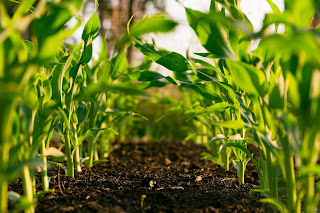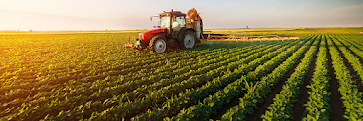Climate Impact on Agriculture?
Agriculture is an important sector of the U.S. economy. The crops, livestock, and seafood produced in the United States contribute more than $300 billion to the economy each year.[1] When food-service and other agriculture-related industries are included, the agricultural and food sectors contribute more than $750 billion to the gross domestic product.
Agriculture and fisheries are highly dependent on the
climate. Increases in temperature and
carbon dioxide (CO2) can increase some crop yields in some places. But to
realize these benefits, nutrient levels, soil moisture, water availability, and
other conditions must also be met. Changes in the frequency and severity of droughts and
floods could pose challenges for farmers and
ranchers and threaten food safety.
Meanwhile, warmer water temperatures are
likely to cause the habitat ranges of many fish and shellfish species to shift,
which could disrupt ecosystems. Overall, climate change could make it more
difficult to grow crops, raise animals, and catch fish in the same ways and
same places as we have done in the past.
The effects of climate change also need to be considered
along with other evolving factors that affect agricultural production, such as
changes in farming
practices and technology.




Comments
Post a Comment